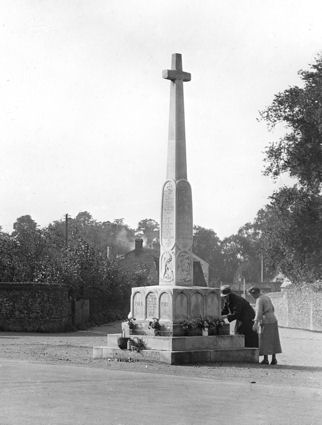Following his appointment as Head Teacher of the Church School in 1908, Percy Robinson built up an extensive knowledge of Trumpington’s history. One of his individual notes from the early 1920s is about Cross Hill and the discovery of the base of the village cross in 1921, reproduced below.

Cross Hill
This is the name given to the piece of land at the junction of the Grantchester and Trumpington main Roads. It no doubt derives its name from the fact that the old Village Cross stood on this site.
When excavations for the foundation for the present War Memorial were in progress, the base of the old stone cross was uncovered, the top being only about three inches below the surface of the road. Mr. Nathan Scott, who was entrusted with putting in the foundation for the present memorial, was about to cement it over when I happened to pass. I told him it would have to be removed, but being pressed for time I saw Mr. William W. Pemberton, told him of the discovery, and he promised to have it removed to a safe place.
The Parish Council took upon itself the ownership of the stone, and offered it to the vicar and churchwardens on condition it was placed in the church, where it now stands.
Base of the Old Village Cross
This stone was discovered 17th August, 1921, and was given to the vicar and churchwardens by the Parish Council.
It is a piece of Barnack stone 2ft. 4in. square at the bottom and 1ft. 9in high.
The socket which contained the shaft is about 1ft square, and contained pieces of the shaft when found. In the churchyard opposite the north door is a stone containing a shaft, which is said by some to be the original of the village cross, but the cross is missing. The shaft is about the same size.
Notices were originally fixed to the cross, and the last record of one being put on this cross is in 1691.
There are two inscriptions on the stone. One is in Gothic letters and reads: “Pray for the souls of John Stockton and of Agnes his wife.” The other is indecipherable, for no proper meaning can be obtained from it.
No definite information can be gleaned as to who John Stockton and his wife Agnes actually were, but it is probable the stone was erected in the 15th century.
Messrs. Rattee & Kett, Cambridge, fixed the stone in its present position, and this, together with the inscription on the tower wall, cost £23.
Scanned from Percy Robinson’s original typescript by Howard Slatter.
For further information, see the Cross Hill page.